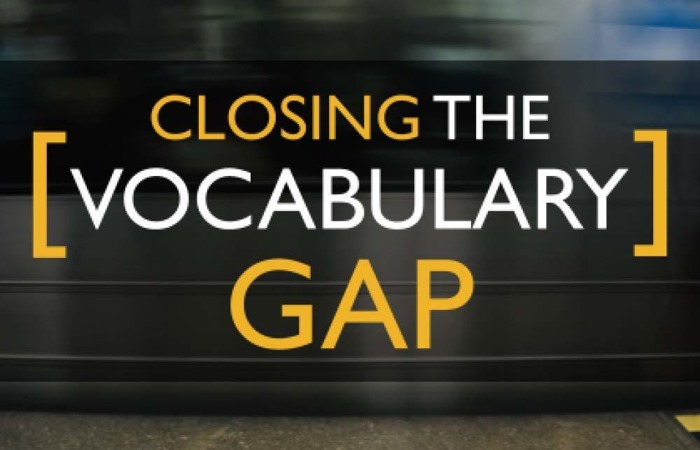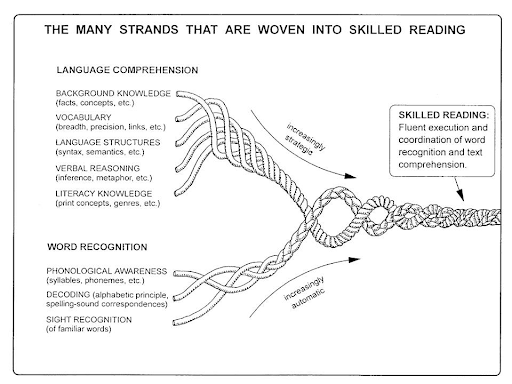Inspiration SEND Network Book Blog #3: Closing the Vocabulary Gap
Back
According to the National Literacy Trust, 1 in 6 adults in England have very low literacy skills, preventing them from accessing the job market and supporting their own children with learning. Specific learning difficulties such as dyslexia (experienced by around 10% of the UK population) make reading more challenging but we should also be mindful of difficulties understanding written and verbal communication that children with communication and interaction difficulties experience.
As literacy is the key to accessing learning across the curriculum, it’s one of the most important skills learners need to develop. Sarah Fuhri, Literacy Lead and teacher of MFL at Cromer Academy in Norfolk, has been looking at the role of developing knowledge of vocabulary across the whole school as a means of raising achievement for all pupils. As part of her research, she has read Closing the Vocabulary Gap by Alex Quigley and has shared her thoughts with us below.
Closing the Vocabulary Gap – Alex Quigley
Closing the Vocabulary Gap has helped me enormously to understand how students read and how they understand what they read. Quigley’s own research and the research of some global superstars in the field render total confidence in his solutions to empower students with the skills they need to succeed with reading and comprehension in school and in their lives beyond.
Quigley asserts repeatedly through the book that we have to teach breadth and depth of words to enable our pupils to become ‘word-conscious’. Being ‘word-conscious’ will enable our students to cross to different subject areas with an increased ‘word-hoard’ which in itself will render the student more confident with the reading, writing and speaking of academic words and specifically with the words that are used in several contexts. Importantly, he recognises that less mental effort used for reading will afford more time for writing - particularly useful in exams and assessments.
Who doesn’t love a statistic? Quigley’s use of data drives home the vocabulary gap with Hart and Risley’s study of 42 families, demonstrating that 32 million more words were spoken to children aged from birth to 48 months by professional parents than those from disadvantaged backgrounds. In addition, Quigley discusses that students need to know 95% or more words in any text to truly understand it, bearing in mind the complexity of language at KS2 and the higher demands of the KS4 curriculum.

Scarborough’s Reading Rope Source: dyslexiaida.org
He sets out the complexity of reading with the analogy of Scarborough’s reading rope and the importance of teaching the big five: phonemic awareness, phonics, fluency, vocabulary, comprehension. We are reminded of the ‘deep orthography’ of English, where our sounds very often do not relate to their graphemic counterpart. He calls this the alphabetic code and that it is crucial for pupils to have this taught in order to become successful readers.
Quigley’s student ‘James’ really resonated with me, as one of the many middle-band students who can slip under the radar. James probably thinks his reading is okay until he has to read out loud and it becomes obvious that he struggles with unfamiliar words. I absolutely loved this; not that James was struggling, but actually how this fortifies the argument for explicit word teaching.
Quigley reiterates the importance of recognising that explicit vocabulary teaching via ‘codes, code switching and code breaking’ is central to our students’ development in reading and understanding. Academic language is broken down into 3 tiers. He establishes Coxhead’s Academic Word List as a useful resource which identifies words based on academic texts used in universities. The words in this list go across subject areas forming a generalised academic code, thereby helping us choose what to teach. So many of the academic words we need to teach have either Greek or Latin as roots. Through the teaching of etymology and morphology, the words become not only accessible but interesting. Pupils are, by nature, inquisitive and they will develop an interest in the words and the word families because they understand the component parts of the words and see links across the curriculum. The teaching of a focussed ‘list’ of words in this way will enhance reading, discussion and spelling and by consequence developing word depth.
As a modern languages teacher, so much that Quigley writes is also true to my subject area. Much decoding and some etymological references are commonplace in the MFL classroom already but not in the depth or structure of teaching that is required. Throughout the book, Quigley often draws on the experiences of the EAL community and recognises that these pupils can link words or parts thereof, across languages to draw out meaning. He argues that if English students are able to draw out the ‘breadth’ and ‘depth’ of vocabulary, then they will be able to decipher the meaning of words across the curriculum.
In order to close the vocabulary gap, a whole school approach means commitment and dedication. Whilst it appears to be a massive undertaking, it is important to point out that it need not be burdensome, simply a way of informing our teaching and students’ learning which is what we do all the time, isn’t it? For those schools already using Lemov’s Control the Game with form time reading, this could be extended to subject lessons, to embed reading further across the school, but also to alert us to students who are hiding their poor reading skills. Our school culture allows us the freedom to witness learning beyond our subject areas; from this practice, we can learn so much more about our students. In addition, visits to schools in or outside their own MAT, where ‘word-consciousness’ is already de rigueur would be invaluable for any member of staff. Finally, the backing of SLT is crucial; without which it simply won’t be a cohesive strategy through the school.
All of the above is the ground work. From here we can call upon the expertise of teachers within our setting or beyond if necessary. Colleagues who have completed early years training and can assist us to develop word instruction with their knowledge of morphology for example. Departments can discuss words to be explicitly taught and the etymology of each (Quigley has a list of online resources to support this). Making these available across departments means that colleagues can pick up polysemous words to ensure that instruction is broad and deep.Kathrine Mortimore’s ‘Disciplinary Literacy’ uses Torquay Academy in example: the school has used each of Quigley’s guidance points to create their own etymological word dictionary which is produced for the year 7 intake, for students to use throughout their secondary school journey.
Want to find out more? Alex Quigley blogs at theconfidentteacher.com and you can follow him on Twitter.
